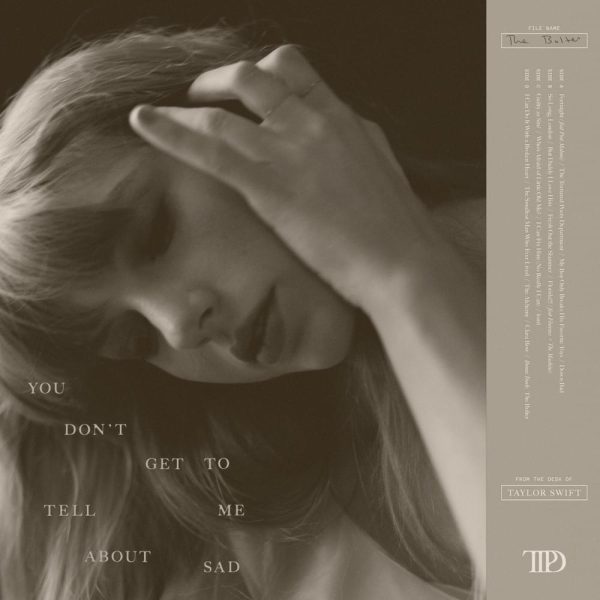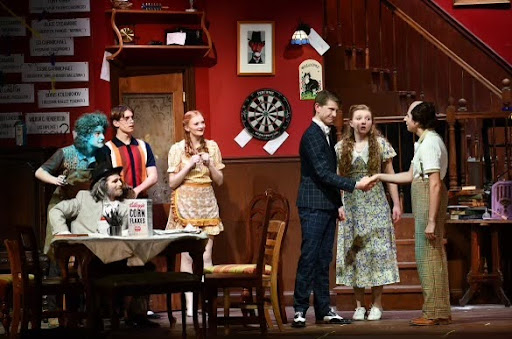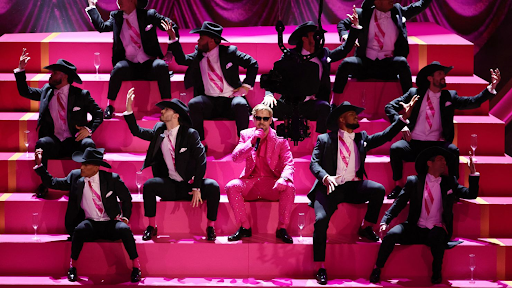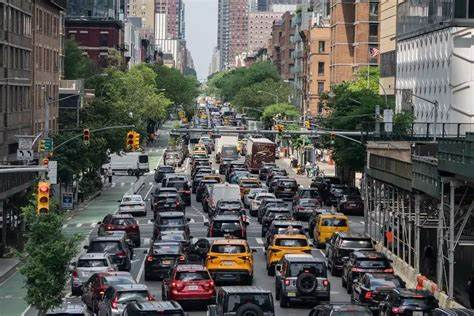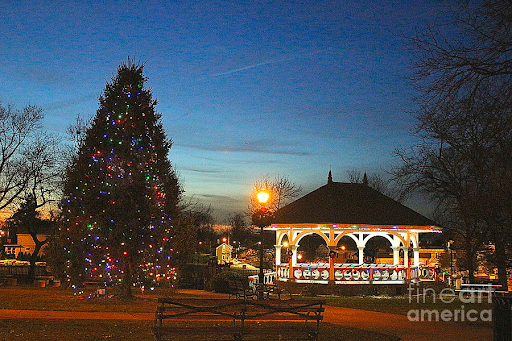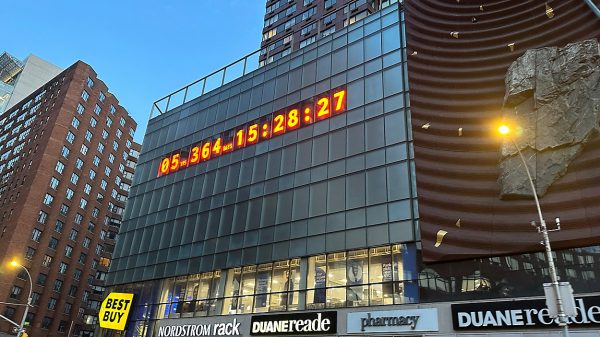Gallery of Fine Art: An Interview With Victoria Selbach
Victoria Selbach’s paintings are on display for Manhasset’s Gallery of Fine Art’s newest exhibit. These intricate portraits depict women realistically while highlighting their beauty. Ms. Selbach’s exhibit will have an opening on March 25th, which anyone will be able to attend.
1. What is your educational background?
I jumped into art early. All through grade school I attended Saturday classes at the Carnegie Mellon Museum in Pittsburgh. The ‘Tam- O-Shanter” classes taught by Mr. Fitzpatrick touched generations of aspiring young artists. Andy Warhol famously took these drawing and pastel classes which were taught with a heavy focus on discipline and dedication. From there I graduated to the Saturday classes at Carnegie Mellon University where we could focus on a choice of different mediums and skills. One of the classes took us to the Pitt Morgue to study anatomy with cadavers. I was also able to attend a high school where I could focus on studio art. That early privileged access to an arts education makes a far reaching and profound impact. All children should have quality access to the arts through public education.
2. Why did you become an artist?
I was encouraged from a young age by my mom who celebrated every early creation. I seriously doubt I had any special ‘talent’ but that sort of positive reinforcement, approval, and appreciation impacts your self identity and worth. It made me feel good about myself and spring-boarded me onto the next project. It also made me feel ‘special’ in the sense that it’s alright to be different. I was a bit of a bird of a different feather in my surroundings. My brothers were outside riding dirt bikes, racing cars, and playing in the hay barn while I had allergies to pollen, grass, horses, and stayed inside to draw, imagine, and create. Growing up in a semi-rural area just outside Pittsburgh where beer drinking, football, and deer hunting were all the rage, I could not wait to escape, take risks, get to NYC, and attend Parsons School of Design.
This takes me back to your first question about education. I didn’t study fine art in college. I’m not sure what came first: my twin desire to pursue fashion, or my father letting me know that, as the first generation in my family to attend college, it wasn’t an option to go to college “to study to be a starving artist.” Art and creativity were seen as a craft, a tool to build something with a functional use, to make a contribution, to ensure a livelihood. I grew up surrounded by generations of “makers,” people who rolled up their sleeves and built amazing things, producers rather than consumers. And I also came from a long line of seamstresses. I watched my mom not only sew her own cloths but revel in the fashions of the times and the creativity of it. So I came to New York, studied fashion at Parsons, and spent many years designing before focusing on painting full-time.
3. How do your personal experiences influence your art?
My work is about women and what it feels like to walk this life as a woman. My experiences and my relationships with the women in my life and all they have imbued in me, even stories of others strength and survival influence my art. I’ve done a “Perspectives” series that explores the way women are seen and how we see ourselves and a series of “Goddesses” that capture contemporary women who embody the power of the divine. This last years politics has deeply rocked my psyche. I’ve been thinking a lot about the women who have come before us and all they have contributed to who we are today. That is the fuel behind my new series “Generational Tapestry.”
4. How do you pick a subject to paint?
The vast majority of women I have painted are individuals I know, love, and deeply respect. Most often, I will approach a muse and ask her to work with me, but sometimes friends step forward and express a real desire to collaborate. I have done commissions. Those who reach out to me must sense a certain shared chemistry so the results are wonderful and often start friendships. At times I find myself overwhelmed by the power and radiance of a woman on the subway. So far I haven’t successfully found a way to approach strangers, but beauty and inspiring women are everywhere.
5. What draws you to create portraits, especially nudes?
I am drawn to creating larger-than-life size depictions of women to champion the true power of really seeing and celebrating women. I joke that after all those years in fashion I just simply was not interested in painting a woman in clothing. But it’s much more than that. The body is gorgeous, the way it catches the light, the way a woman feels the warmth of the light roll across her body, the way our true selves can be released when we drop all pretense, accouterments and embellishments. Clothing can tell a story and in the right hands can even convey emotion. But the nude is pure, honest, natural, complete. It is also a powerful thing for a women to own her image, to present herself naturally, confronting historical bigotry, and rejecting the burden of a legacy of prejudicial lies. There is power in lifting the cultural veil.
6. How does the location of the portrait impact the painting?
For the vast majority of the nude portraits on my website, I worked with the women at one historical cottage in Sands Point. It has been an amazing location that unfolds through various rooms and corridors. Magical lighting, as the sun rises and sets, creates an enormous array of unique settings. The long shadows of morning and afternoon pierce through different parts of the house and garden bringing with it incredible shadows. At certain times of the morning, the light comes at an angle through wrought iron gated windows, creating scrolls of shadow that conform to the curvatures of the resting body. In another area, that same light filters through trees before echoing into a deep room with smoky blue paneling, somehow the effect makes women glow in a mysterious pink light. Each change of location effects the light, the mood and dynamically informs the painting.
7. What is your creative process like?
My work starts with a connection to the women. We choose a day with incredible light and spend hours chasing the intersections of light and shadow. Most of the time spent with the model is simply moving from place to place in the house and garden looking for incredible light where she can loose herself in the moment.
The focus is always on the light, which frees the muse to really enjoy the adventure. Every model I have ever worked with is enthralled with the process and how it makes her feel. I capture hundreds of digital images to use for reference. I paint in the studio alone, developing a dialogue with the piece until I can hear her reach out and speak to me.
8. Why acrylics?
Both acrylic and oil paint contain the same sometimes toxic pigments but the airborne carcinogens present in the solvents and driers required for my process in oil is more than I can tolerate. There is a historical bias for oil. Acrylic is often thought of in terms of specific visuals effects from a few 60’s painters. Actually, acrylic is a super versatile medium. Each desired result requires a different approach. Since I was never indoctrinated by the rigid painting technique of a specific academic school, I have developed my own process of sculpting an image on canvas. I often build up disparate layers of pigment with transparent acrylic gel … striving to obtain a mixed luminosity in the lights while laying in color after color and letting the deep areas saturate into darkness. My current goal is to break down the process I fall back on and explore new approaches. In the last year I have experimented quite a bit with oils, although only when the weather permits and I can open all the windows for cross ventilation. I’ve played with direct paint application, worked with thicker sculptural paint and my most recent work is built over a collaged background where I raise a surface above the collage to hold the figure. I would like to see these new approaches help me break away from the process that has become routine, to free me to move with more physicality and expression. I want to dance in front of the canvas.
9. What advice do you have for young people interested in pursuing art?
Listen to your heart. It is the best teacher. Experiment broadly but be true to your own voice. If you ever need a reminder that there is no wrong way to create, head to a major museum and drink in all that those who came before you dared to brave.




